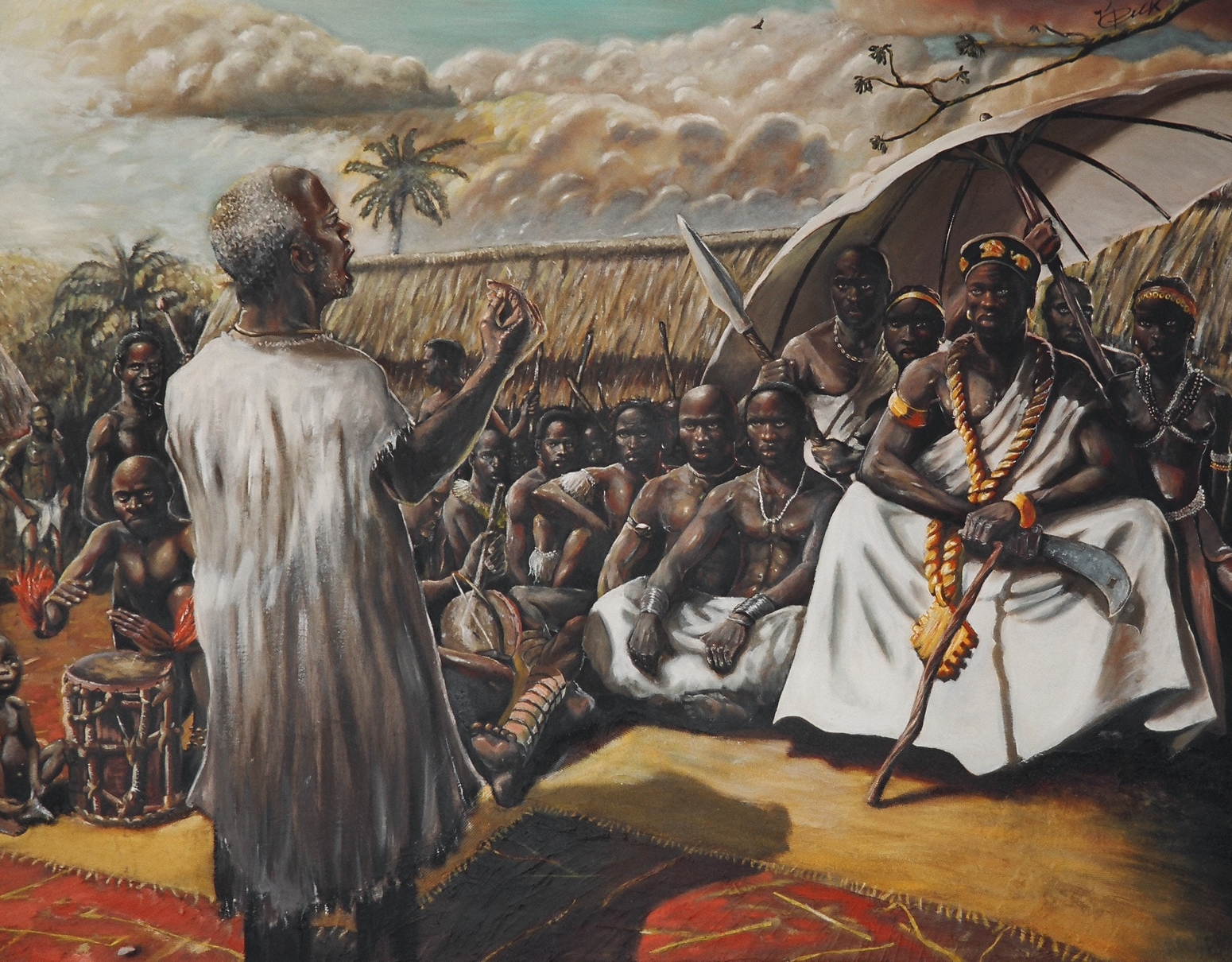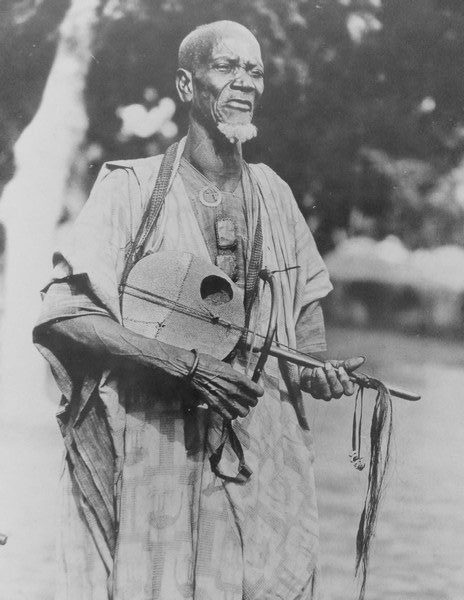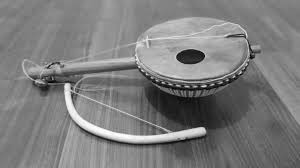
Oil on canvas from 2002, 140 x 114 cm – 55.1 x 44.8 in. Sold
Prior to colonization, they were important personalities such as King’s advisors, Masters of Ceremonies, and guardians of the memory of an entire people. In time of war, they were the only captives considered as a precious knowledge holder, like a secret book containing valuable information. Thus, the Djeli (also known as Griot) passed under the command of the victorious King, who also enriched himself with knowledge. The Djelis transmit their memory only generation to generation, and became Griot father to son. Today, these guards still tell stories dating back several centuries. The stories are not written, but they stem from the memory keepers. They tell the stories to the rhythm of drums and other traditional instruments that give each of their sentence even more weight and expression.

This painting evokes the transmission of knowledge. In this work, the Djeli shares his knowledge at the court, at the request of the king. He is surrounded by musicians, a player of Inza (a horsehair monocord, with the sound box composed of a half calabash on which is stretched a goat skin, an arched bow with a rope, also with horsehair of horse). This instrument has the particularity to imitate the hum of human voice, which is why it remains the preference of Djelis and West African storytellers. The King is shown here with his two wives, his personal guard and his second to his right, all captivated by the story of the Djeli. Through this painting, I describe the power of the intellectual and spiritual faculties in opposition of material and military forces.

ARCHIVE
Djéli from West Africa with the inzad instrument.
